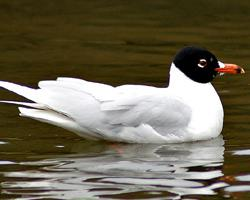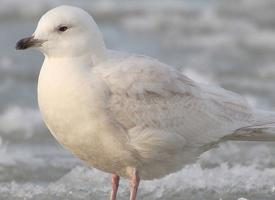
Starea de conservare
| Amenințat |
Descrierea animalului
The Silver Gull (Chroicocephalus novaehollandiae), often synonymous with the common seashore sights and sounds, is a species of gull native to Australia and surrounding regions, including New Zealand, New Caledonia, and Tasmania. This bird is a highly adaptable and opportunistic feeder, which has allowed it to thrive in a variety of environments, from coastal beaches to urban landscapes.Adult Silver Gulls are easily recognizable by their striking plumage and physical characteristics. They typically measure between 40 to 45 cm in length, with a wingspan of approximately 94 cm, making them relatively small compared to other gull species. Their bodies are predominantly white, which is complemented by light grey wings and back. A distinctive feature of the Silver Gull is its bright red beak and legs, which contrast vividly against its lighter body. The tips of their wings are adorned with black markings, which can vary in size among individuals. Adults also have a ring of red around their eyes, adding to their distinctive appearance.
Juvenile Silver Gulls display a different coloration compared to adults, featuring a mottled brown and grey plumage that gradually fades to the adult's colors as they mature. This transformation occurs over the course of several years, with the birds reaching full maturity by the age of four.
Silver Gulls are known for their loud and raucous calls, which are a common sound along coastlines and in urban settings where these birds are present. Their vocalizations play a crucial role in their social interactions, including mating rituals and territorial disputes.
In terms of diet, Silver Gulls are omnivorous and display remarkable versatility. Their diet includes a wide range of foods, from fish and marine invertebrates to human scraps and garbage. This adaptability in feeding habits has enabled them to flourish in diverse environments, although it has also led to conflicts with humans, particularly in areas where they are considered pests due to their scavenging behavior.
Breeding behaviors of Silver Gulls are quite fascinating. They are monogamous birds, often forming long-term pair bonds. Nesting typically occurs in colonies, where both parents share responsibilities for nest construction, incubation of eggs, and feeding of the chicks. Nests are usually constructed on the ground and can be found on islands, beaches, or even in urban areas. The breeding season varies across different regions but generally takes place during the warmer months.
Despite facing threats from habitat loss, pollution, and human interference, Silver Gull populations are currently stable and they are classified as Least Concern by the International Union for Conservation of Nature (IUCN). Their success can largely be attributed to their generalist feeding habits and adaptability to various environments, including those heavily influenced by humans.
In conclusion, the Silver Gull is a resilient and adaptable bird that plays an important role in coastal ecosystems. Its presence is a familiar part of life for many Australians, serving as a reminder of the intricate connections between humans and wildlife.
Animale similare
Fotografii noi cu animale
Top 10 animale
- Dolphin gull (Leucophaeus scoresbii)
- Diana monkey (Cercopithecus diana)
- Moustached guenon (Cercopithecus cephus)
- Greek tortoise (Testudo graeca)
- Stone loach (Barbatula barbatula)
- Galápagos tortoise (Geochelone nigra complex)
- Japanese macaque (Macaca fuscata)
- Russian tortoise (Testudo horsfieldii)
- Common flying dragon (Draco volans)
- Galápagos penguin (Spheniscus mendiculus)


